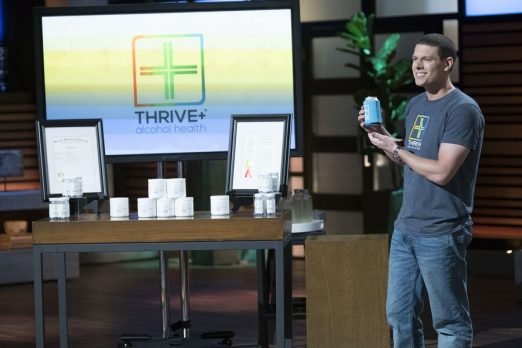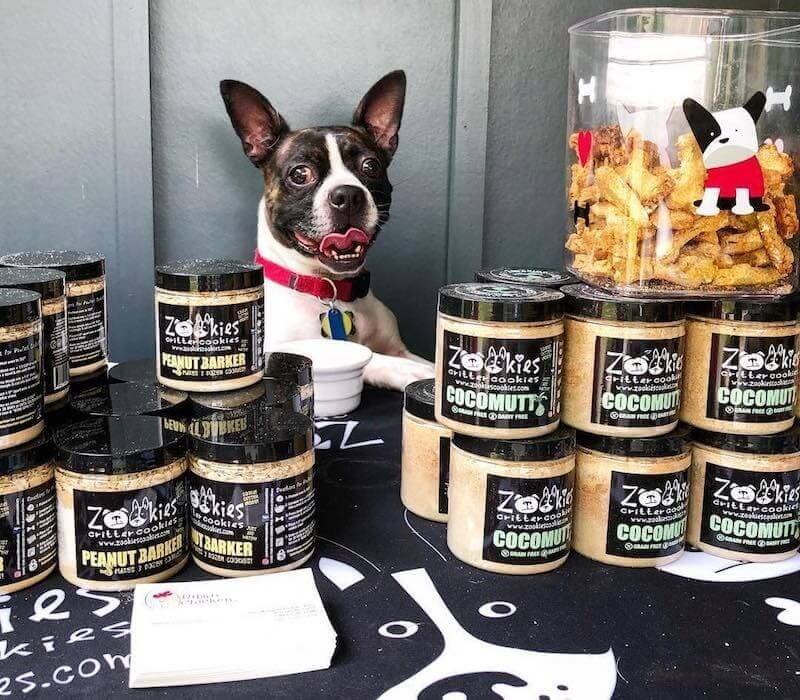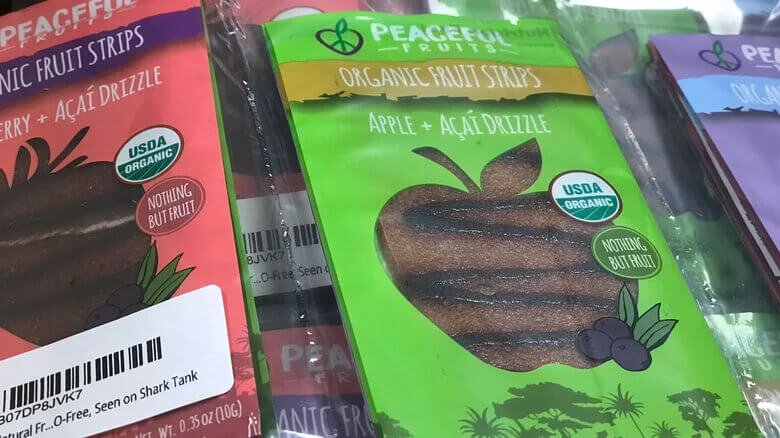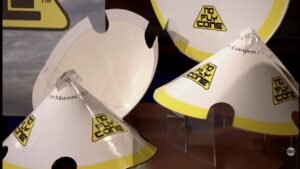Look, we’ve all seen those Shark Tank pitches that seem too wild to make it. Another hangover pill? Pass. But the story behind Thrive+ (now Cheers) is a case study in grit, smarter brand plays, and what founders should do after getting slammed on national TV. This isn’t about a magic pill—it’s about guts, and using rejection as rocket fuel.
Contents
ToggleThe Pitch: Thrive+ Steps Into the Shark Tank
Brooks Powell, barely out of college, walks onto Shark Tank Season 9, Episode 24, swinging for the fences. He’s pitching Thrive+, a supplement he says will soften the morning-after blow of last night’s drinks. His ask: $400,000 for 10% equity—planting his flag at a $4 million valuation.
The pitch was tight. Brooks framed Thrive+ as something smarter than hair of the dog. He brought data, talked science, and held his ground like someone who’d run the numbers (and probably chugged his own product before the studio lights came up).
But here’s the tough part: the Sharks? They weren’t buying it.

Deal or No Deal: A Room Full of Skeptics
Let’s cut to it. None of the Sharks invested—zero bites from Mark Cuban, Lori Greiner, Kevin O’Leary, Robert Herjavec, Daymond John, or guest Shark Bethenny Frankel.
Why? You know this song. Regulatory shade around claiming to cure hangovers. Kevin hammered the supplement angle: What happens if the FDA comes knocking? Others, especially Lori and Daymond, doubted real results and worried about risky messaging. There was an air of, Kid, you’re selling magic beans.
Brooks didn’t flinch. He fielded questions, explained his research, and handled those TV tornadoes with more composure than most. But in the end, the curtain dropped—no deal, no handshake, just a hard lesson about the difference between a flashy pitch and Shark-level proof.
Meet the Guy Behind the Brand: Brooks Powell
Quick sidebar: founders don’t matter until they absolutely do. Brooks Powell is not your average hustle-bro. He went to Rice University, studied neuroscience, and became obsessed with the biochemistry of alcohol’s aftereffects.
Most founders build for a passive customer base. Brooks? He built for himself and the friends who’d text him after a night out. His early strategy was a lesson: solve a real pain point, do the boring homework, and let the hype arrive (or not) after. He wasn’t out to dazzle the Sharks with showmanship—he was trying to hammer through startup skepticism with logic and data. That’s more rare than you think.
Thrive+ By the Numbers—Net Worth and Hard Revenue
This is where things get interesting. Some Shark Tank companies ink a deal and vanish in six months. Others, like Brooks, turn No into bigger money.
By 2021, post-Shark Tank, Cheers (formerly Thrive+) was valued at $49 million. That’s not a fantasy number—real valuations, real due diligence, and real outside investors. Annual revenue hit $3.5 million, and then surged to $7 million by 2022.
Brooks played it smart, launching a $1.7 million crowdfunding campaign to expand into retail. He didn’t just grow his DTC website—he got his brand story everywhere future buyers scroll or shop. If you’re a founder, pay attention: rejection isn’t failure, but lazy follow-up is.
What Fueled Their Growth After Tank Rejection?
Now for the magic question—how did Cheers turn a reality-TV loss into a $7 million payday? Two moves:
First, Brooks didn’t mourn his bruised ego. Instead, he pivoted his pitch from hangover cure to after-alcohol aid. The new angle was slick and legal. Less snake-oil, more science-backed wellness.
Second, he expanded beyond a one-shot pill. The product line evolved—Cheers Restore (patented for better absorption), hydration solutions, and bundles targeting drinkers anxious about their mornings. He crowdfunded and grew his physical retail presence, instead of relying on a flash-in-the-pan post-TV sales spike.
Remember Bombas Socks? Thrive+ followed a similar play—start with a sharp single SKU, then stack on product extensions as customer trust grows.
What’s the Product Playbook Now?
The 2018 formula was basic. The 2024 product line? Totally different beast. Cheers offers multiple supplements, led by Cheers Restore, which uses a patented permeabilizer to boost how fast you absorb the good stuff (basically, it works harder than grandma’s hangover remedy).
Then there’s new hydration products—a nod to Liquid I.V. and all those wellness brands winning the Saturday morning market. They’re not afraid to reformulate, relabel, and relaunch. You’ll see Cheers in supplement aisles, online, and now physical retail. The product’s moved from maybe it works to a scientifically supported alternative—still bold, but much better positioned.

Are They Still Punching or Running Out of Steam?
Sometimes you watch a company catch a Shark Tank tailwind, then fizzle out like day-old soda. Not here. As of 2024, Cheers is hiring, launching new products, and expanding in retail. Their web sales are strong, customer reviews are steady, and Brooks remains at the helm. You don’t raise millions and hit $7M+/year without smart operational discipline.
They aren’t shutting down, selling out, or ghosting customers. Instead, Cheers is scaling up, not playing defense.
The Real Lesson: What Founders Should Steal from Thrive+/Cheers
Here’s what matters. You don’t need a Shark to grow. You need a thick skin, relentless follow-up, and a willingness to rework your playbook at any moment. Brooks Powell built Thrive+ on rejection. He collected real data, used the Shark Tank no as free publicity, then built a company the Sharks would scramble to buy into today.
Take the win from the loss. A TV deal is not the finish line—it’s the starting gate. If your product has loyal customers and you outwork competitors, rejection is just viral marketing you didn’t have to pay for. Brooks and Cheers turned a cold TV shoulder into a brand worth tens of millions—no smoke, just sweat.
For founders grinding out there: results matter, not TV edits. Keep pitching, keep fixing, keep shipping.
FAQs for Startup Die-hards and Curious Shark Tank Fans
1. Is Thrive+ (Cheers) still in business?
Yes. As of 2024, Cheers is active, growing, and rolling out new products and retail deals.
2. Did any Shark invest in Thrive+ after the show, off-camera?
No. All six Sharks—including Bethenny Frankel—passed on air and off.
3. How did the Shark Tank rejection shape Brooks Powell or Cheers?
It lit a fire. Brooks doubled down, raised more capital, and built a stronger, science-forward brand.
4. What is Cheers’ net worth now?
Valued at $49 million in 2021, with revenue hitting $7 million/year by late 2022.
5. Are the product claims for Cheers science-backed?
Cheers Restore is patented for absorption tech and claims are backed by studies—more science, less fluff than most.
6. Can you buy Cheers supplements in major retail stores now?
Yes. Cheers is moving into mainstream retail beyond its own website, a strategy powered by crowdfunding.
7. Who owns Cheers today? Any big investors?
Brooks Powell remains the face and main driver, but the company brought in outside investors through crowdfunding and growth rounds.
8. How much did Powell actually raise via crowdfunding?
Roughly $1.7 million, plus ongoing capital infusions from non-Shark angels and funds.
Final Word from Someone Who’s Been There
Don’t worship the Tank—use it. When the pitch flops, see the upside. Thrive+ could have faded. Instead, Brooks Powell built a multi-million-dollar machine, rebranded it to Cheers, and found growth investors. That’s why I watch Shark Tank: not for who gets a deal, but who knows how to make one out of nothing.
If you want the real stats and more breakdowns like this, SharkWorth is your spot. Happy hustling, founders.










